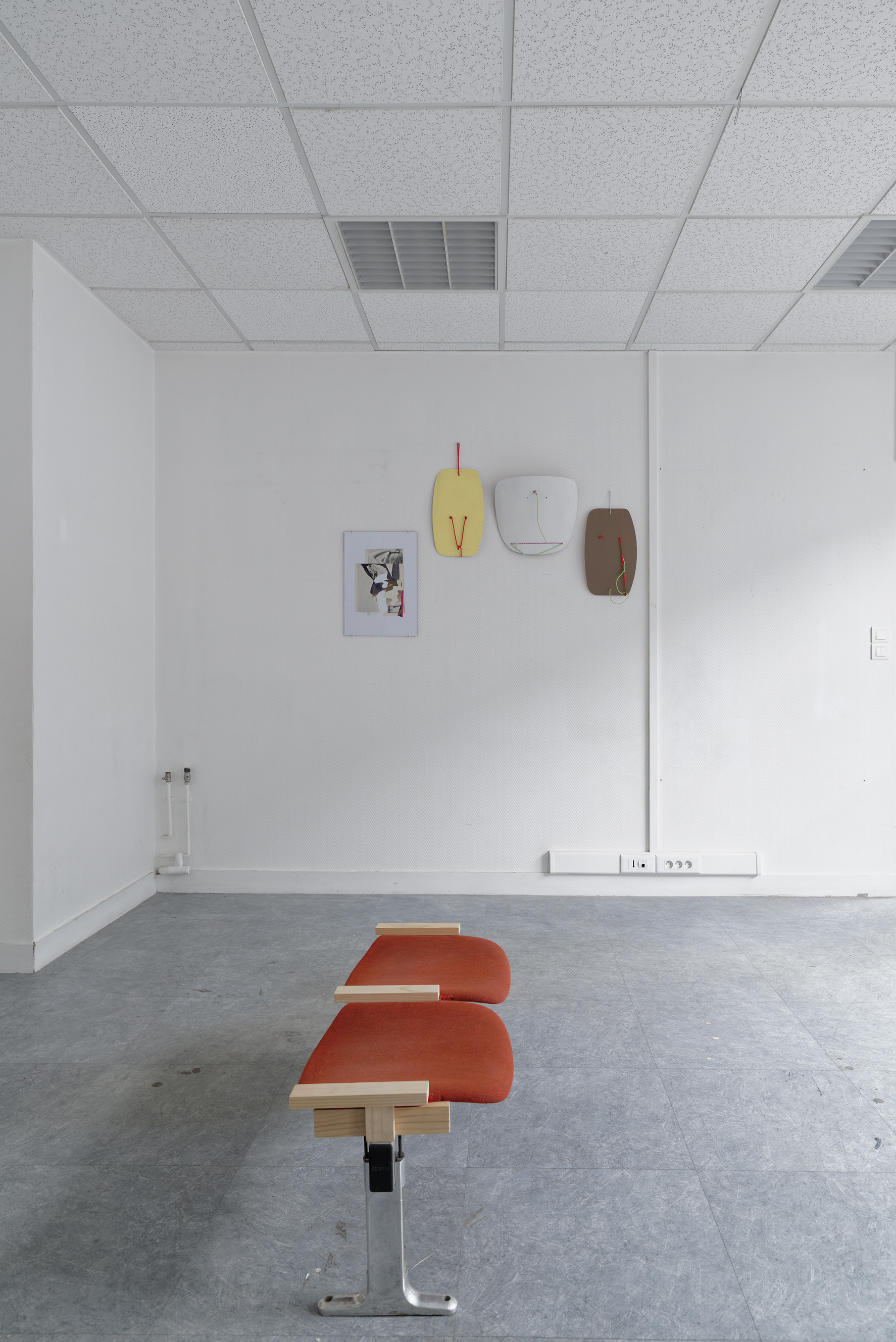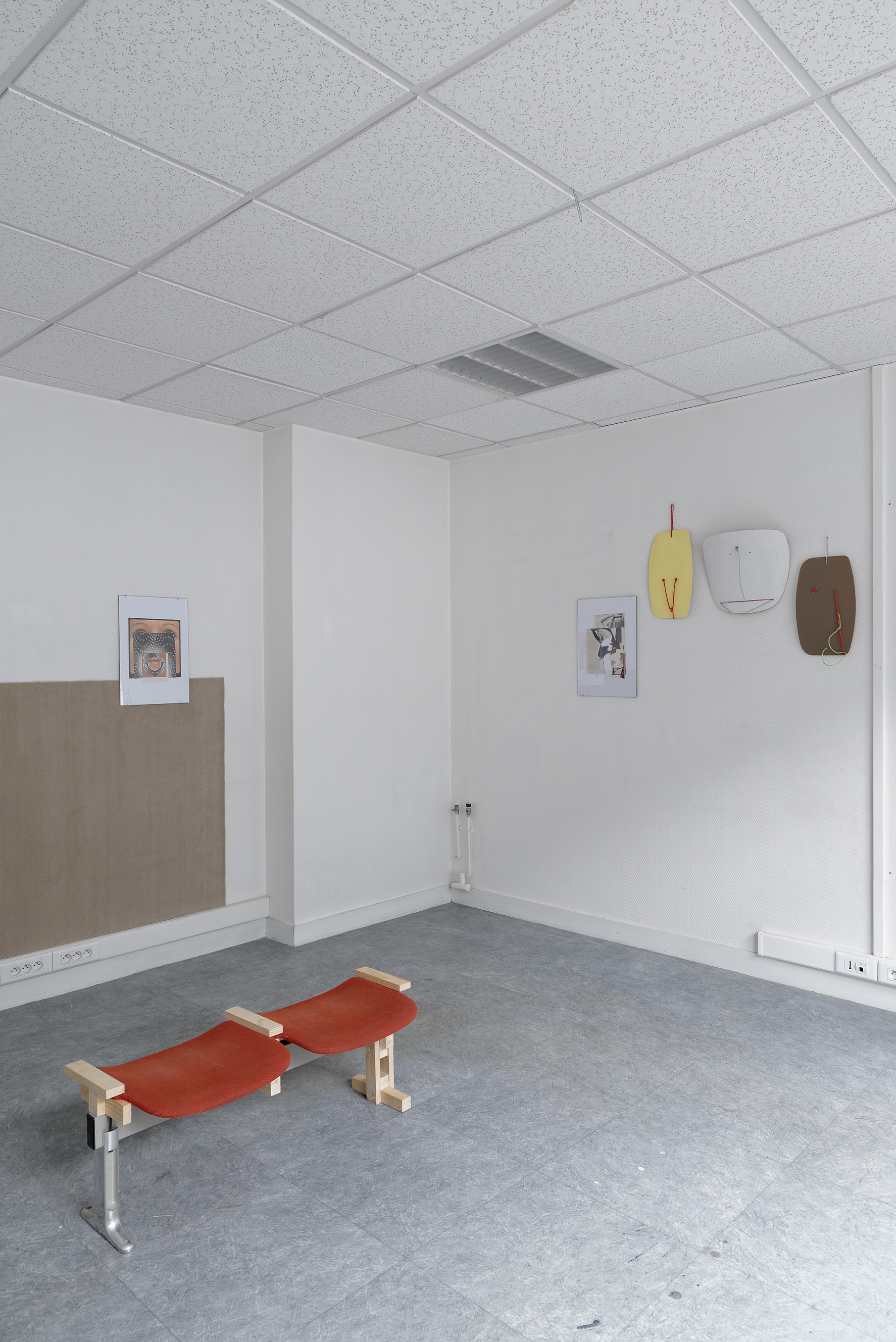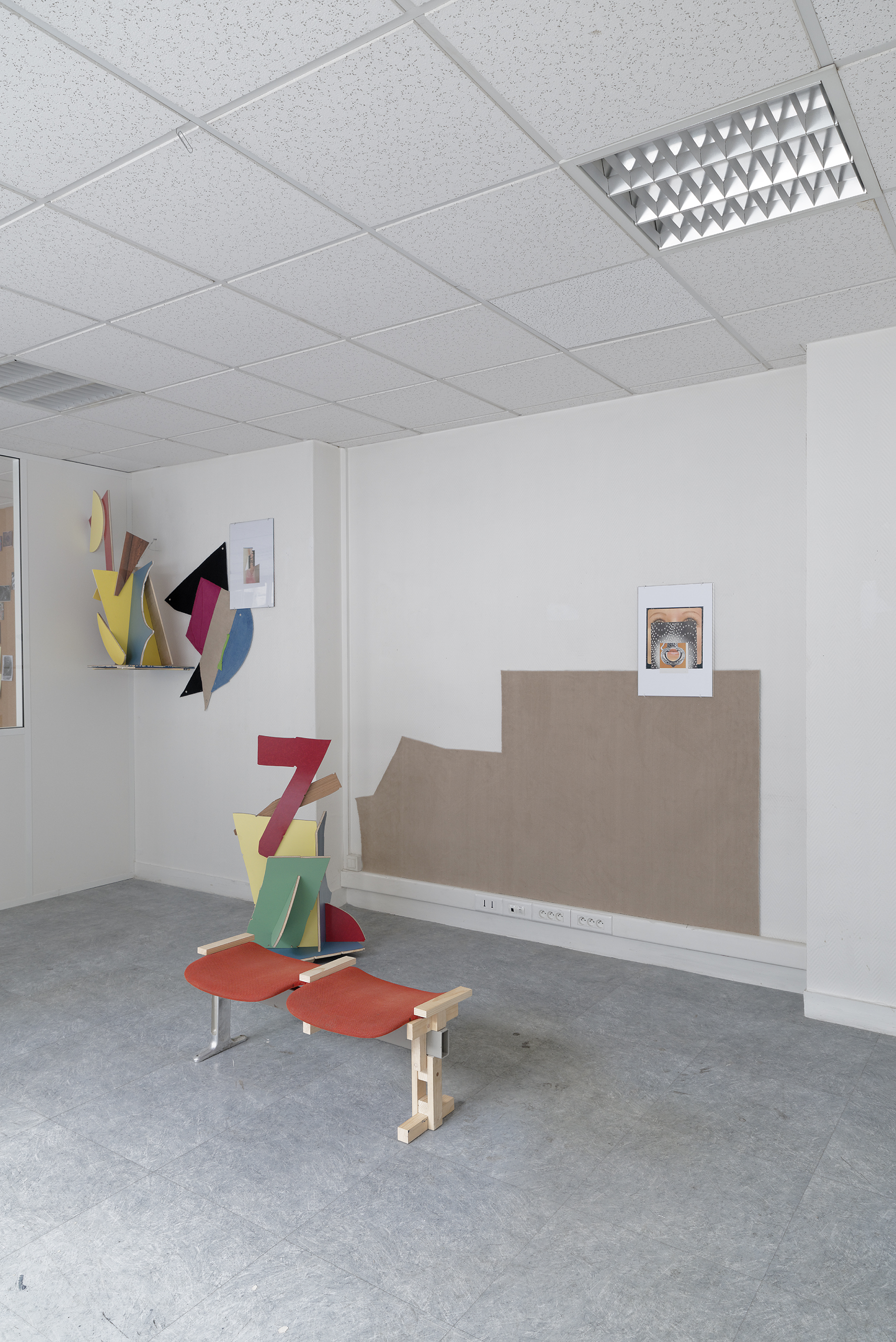Ikebana project
![]()
Ikebana Arrangement Installation
Dimensions variables
Contreplaqué et Formica, peinture acrylique,
collage sur papier et collage de moquette, bois, métal
2014









Monster world (A terrifying tales of a mad doctor)
2014
collage on paper
50 x 70 cm


Davide Cascio & Delphine Trouche
Masque
2014
acrylique, bois, corde
86 x 25 x 4 cm
"En ce qui concerne l'objet to'o, ma thèse est que le référent de l'objet ne doit pas être compris comme une identité -celle de telle ou telle divinité, qui est aussi l'identité de l'objet- mais comme un concept. Chacun de ces objets est en effet nommé, en surcroît de son nom générique (to'o, etc.) d'un nom propre qui est celui de la divinité à laquelle l'objet est consacré."
cfr.: Alain Babadzan, "Essai sur la symbolique de certaines effigies polynésiennes" p.33, Res 1, New york, 1981.
Fondation d'entreprise Galeries Lafayette
on occasion of "Lafayette Anticipation" residency program in Paris.
Suspended between a bidimensional collage and a sculpture made by cutting flat boards, plywood, laminate and painting, it is about trying to reverse the making process. In the early nineteenhundreds Picasso and Braque used to create cardboard sculpture in order to use it as a model for the painting of cubist “Nature morte” on canvas or paper. In the ancient Japanese art of ikebana, the artist starts the work by choosing the vase. The “pedestal” is literally the inspiration for this unique flower composition.


Pablo Picasso
Installation dans l’atelier 242 boulevard Raspail,
Paris
1912
